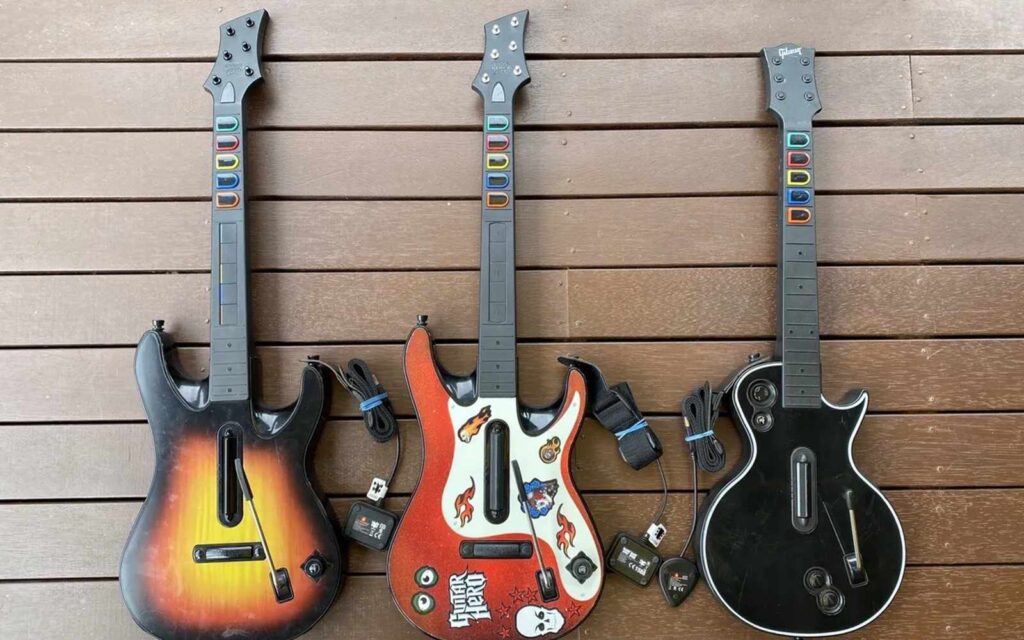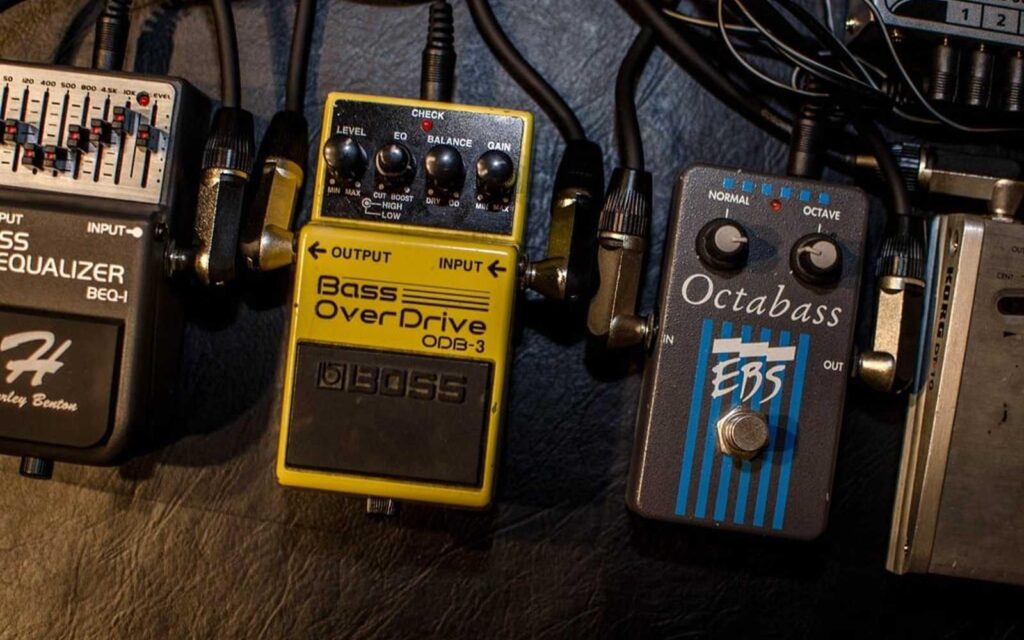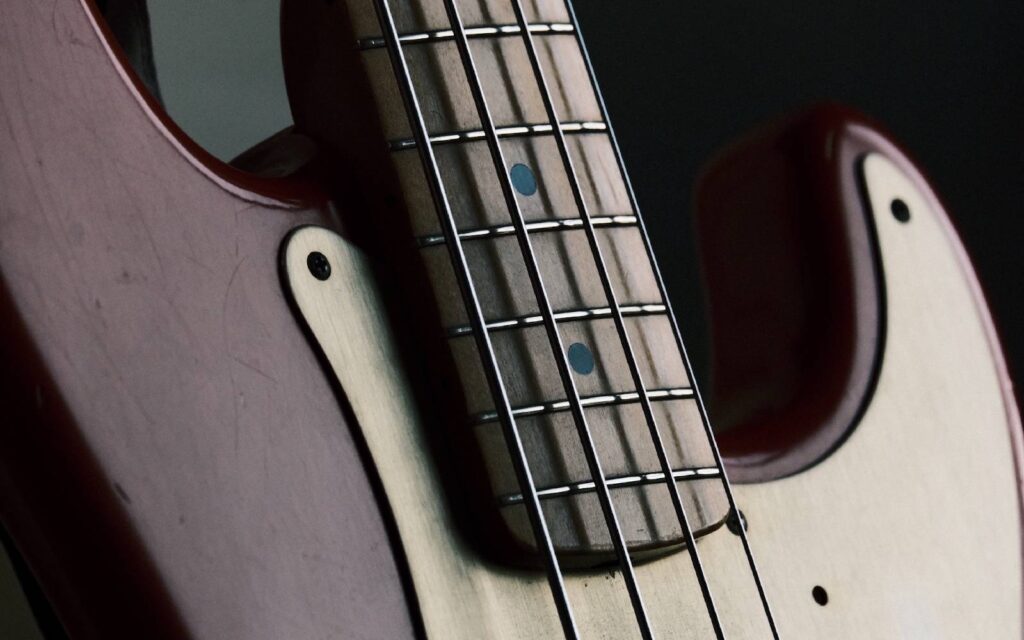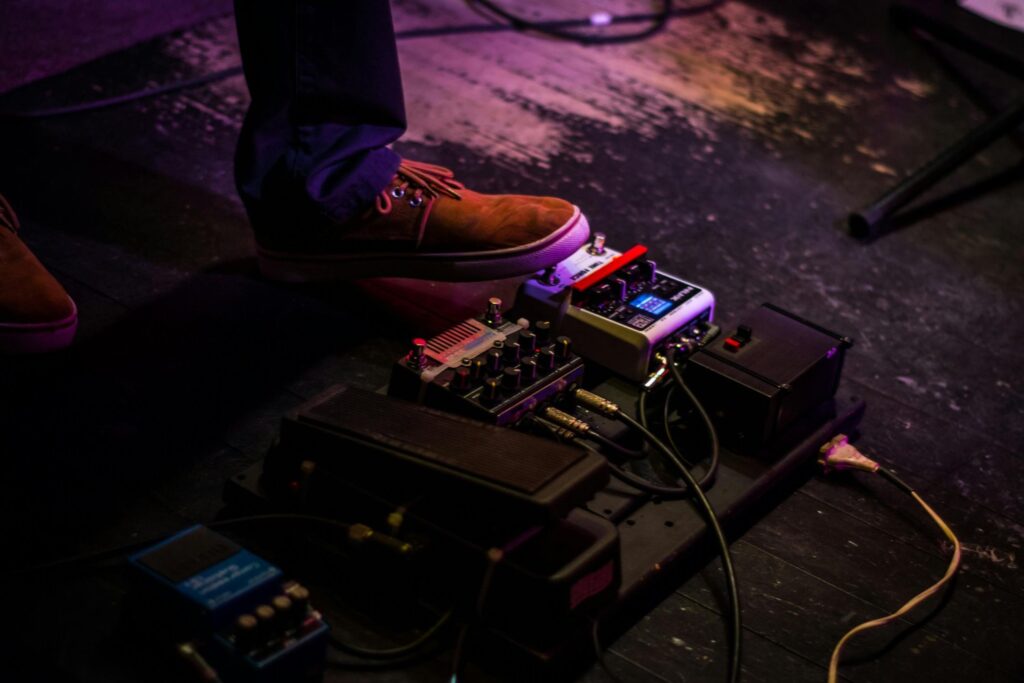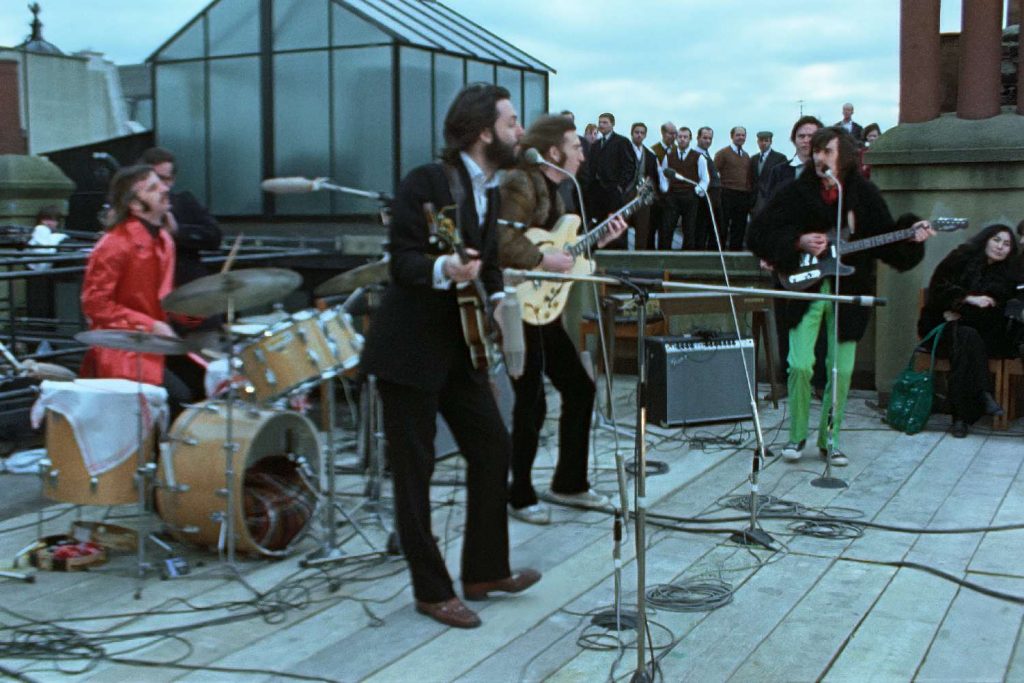Figure A, for example, highlights some classic ‘guitar’ type uses of the suspended chord sound.
This example uses typical open/first position chords. The first bar can be thought of as Dsus4, D, Dsus2, D. Bar two moves to Asus4, A, Asus2, A. Bar three plays Csus4, C, Csus2, C and lastly Bar four is Fsus4, F, Fsus2, F. These sounds can be heard in music from The Beatles, Beach Boys, Radiohead, Eric Clapton and Queen to name a few.
Suspended chords are also commonplace in Funk, R&B and Soul. Often higher voicings are used with syncopated rhythms as can be seen in Figure B. Based around an F Major chord vamp this example takes its cues from Prince/Tower of Power/Earth Wind and Fire and moves between Fsus4, F Major and Fsus2. Check the voicings first (they come from the 5th string Major barre chord shape) and then work on the rhythm. Start slow, making sure you count and try different fingerings to work out what suits. To keep this example sounding really funky it needs to be clean (no unwanted notes/strings ringing/noise) so needs good left hand muting and you need to make sure of the rests. The rests reinforce the syncopated feel and add to the overall groove.
Due to its unresolved or suspenseful sound the suspended chord sound also lends itself to cycling in patterns. Figure C takes Bsus2 and moves up in minor 3rds (Dsus2, Fsus2, Absus2).
Take note of the sound – slightly mysterious yet pleasant and bright. Changing the rhythm (Figure D) can then also help with the feeling of movement. Remember with no 3rd these suspended chords technically aren’t Major or minor (especially without any other context or information about the 3rd in the melody or other harmony). So, suspended chords can be great to use as a contrast when Major or minor is expected.
Figure E highlights a typical rock/pop chord progression in the first four bars. Then have a listen to the last four bars with the incorporation of suspended chords. Bar five is Esus4 to E, bar six Bsus2 to B, bar seven F#sus4 to F# and then G#sus4 in the final bar. Having the suspended chord change to the Major or minor creates an interesting sound of movement perhaps hinting at what our ear is partially expecting to hear which is then followed by the full Major or minor chord.
Lots of options and possible voicings for suspended chords on the guitar. Get stuck in and find some of our own and start experimenting with where they might fit in your music. Next issue we’ll get stuck into 7sus4 chords.
Revisit last month’s guitar lesson here.







